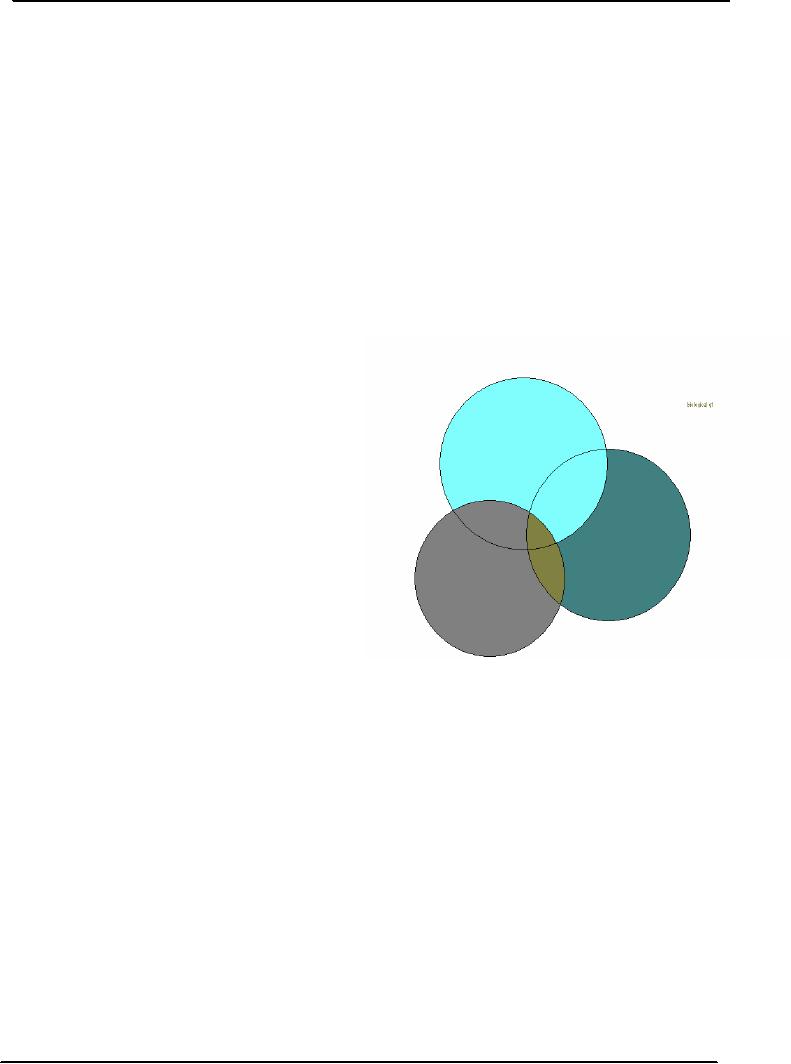 |

Forensic
Psychology (PSY -
513)
VU
Lesson
18
BIO-PSYCHO-SOCIAL
MODEL
Objective:
To
understand the basic ideas of
bio-psycho-social model
To
understand the concept of proportionate
punishment
Bio-psycho-social
model emphasized the underlying
biological tendencies along
with the
importance
of psychological and environmental factors.
This model believes that
biological
predisposition,
environmental/cultural factors and psychological
elements, all play
equally
important
role for making a person
criminal.
The
biopsychosocial model posits that
biological, psychological and social factors
all play a
significant
role in human functioning, including in
mental processes. The model
is used in fields
such
as criminal psychology, medicine, and
sociology, and in more specialist fields
such as
psychiatry
and clinical psychology. In
medicine, it is a way of looking at the
mind and body of an
indvidual
as two important systems
that are
interlinked.
The biopsychosocial model is
also
a
technical term for the
popular concept of the
mind-body
connection. They do not
ignore the
importance
of studies like both twin
and
adoption
studies have clearly shown that
there
is
a genetic basis to antisocial,
aggressive, and
violent
behavior (Mednick et al.,
1984)
Biopsychosocial
model talks about
some
youth
with early onset behavioral
problems,
genetic
factors
strongly
influence
temperamental
predisposition,
particularly
oppositional
temperament, which can
affect
experiences
negatively. When
antisocial
behavior
occurs later in
childhood or
adolescence,
it is suspected that genetic
factors
contribute
less, and such youths tend
to
engage
in delinquent behavior primarily
because
of
peer influences and lapses in
parenting. Bio-psycho-social
factors are mingled like
rainbow
Although
there is research that supports the
sole responsibilities of both
genetics/biological and
environmental
factors of aggression and criminal
behavior, research still
points toward a more
integrated
view on this topic.
This
model is quite optimistic and
believes in treatment and not in punishment and
suggests that all
criminal
should be treated in mental hospitals instead of
locking in jails.
Jails
are factories of criminals
The
core concern of this model
is to challenge the conventional wisdom
that increasing the prison
population
is an effective way to reduce
crime. And he should know.
New criminals are
imprisoned
with
hardened criminals and offenders, the
abnormal environment of jail
does not reform the
criminal
rather make them a habitual criminal
and ultimately increasing the crime
rate.
Limits
of this model
This
model advocated that all
offenders should be treated in mental
hospitals instead of punishing in
prisons.
And if we analyze it seriously, it means
sending all offenders into
mental hospitals instead
of
locking in prisons.
69

Forensic
Psychology (PSY -
513)
VU
Initially
I am saying although this
model makes sense but
its implications should be
taken like a
pinch
of salt.
Mental
hospitals are factories of
abuse
If
we follow the bio-psycho-social model it
means that we would lock the
all criminals in
asylums.
The
environment of mental hospital is
not better than any
jail. So, what will be the
result, we will
make
them a subject to torturous and inhuman treatment and
environment. So applying the idea
of
"no punishment
only treatment" can
too dangerous for society
like one hand:
1.
By removing punishment can encourage
people to commit
crime
2.
On other hand, on the name
of treatment, people can be
subjected to very negative
experience
of sublimation, suppression and
inhuman treatment.
So
the better idea is to apply the
idea of proportionate
punishment
Proportionate
jails
I
think this idea is good in
principle, aiming at keeping
people on the "straight and
narrow"
While
this is undoubtedly a step in the
right direction, would a few
hours a day in jail really
act as a
deterrent,
or a punishment for that matter.
Surely we should be looking to
deal custodial sentences
to
repeat
offenders and perhaps very
long ones if this fails to
solve the problem. The basic
rationale of
proportionate
punishment is
Punish
them who have committed a
crime
Treat
them who are mentally
ill
Repeated
offenders should be kept in separate
jails from other
criminals
The
concepts of Day jails are
being successfully applied in many
western countries, where those
people
are
kept; who have disobeyed the
legal system (like fast
driving) but have not
committed any serious
kind
of criminal act. At the end we
need to use our mind
with the reference of our own
society and
situation.
Probably the most striking evidence
for this proposition is the
recent experience of New
York
City,
which during the 1990s and
into the 2000s registered huge reductions in recorded
crime whilst
substantially
decreasing its use of
prison. The number of people
New York City annually
sends to
prison
has fallen from around
20,000 in the early 1990s to
8,000 today.
Basic
concepts of bio-psycho-social
model
Accepts
the genetic predisposition
argument
But
stresses the role of
psychological factors such as parenting,
attachment etc
Social
variables such as cultural factors are
also emphasized
More
optimistic, believes in treatment
for offenders and not
punishment
70
Table of Contents:
- INTRODUCTION TO FORENSIC PSYCHOLOGY:Future of Forensic Psychology
- INTRODUCTION TO FORENSIC PSYCHOOGY:Way of police investigation
- FORENSIC PSYCHOLOGY AND POLICE:Violent Criminals
- POLICE PSYCHOLOGY:Use of excessive force, Corruption, Personnel Selection
- POLICE PSYCHOLOGY:Fitness-for-Duty Evaluation (FFDE), False Confessions
- INVESTIGATIVE PSYCHOLOGY:For instance, Empirical and logical approach
- INVESTIGATIVE PSYCHOLOGY:Crime Scene Investigation, Staging
- PSYCHOLOGY OF VIOLENCE:Law of Conservation of Energy, Super ego
- PSYCHOANALYTIC MODEL AND VIOLENCE:Fixation at Oral Stage
- PSYCHOANALYTIC MODEL AND VIOLENCE:Defense Mechanism, Rationalization
- JUNGIAN PSYCHOLOGY AND VIOLENCE:Freudian Methods, JUNGIAN PSYCHOLOGY
- JUNGIAN PSYCHOLOGY AND VIOLENCE:Religion and mental illnesses
- BEHAVIORIST PERSPECTIVE AND VIOLENCE:Shadow’s violence, Child’s violence
- BEHAVIORIST PERSPECTIVE AND VIOLENCE:Operant Conditioning
- BEHAVIORIST PERSPECTIVE AND VIOLENCE:Schedules of Punishment
- SOCIAL LEARNING MODEL AND VIOLENCE:Observational learning, Vicarious punishment
- MORAL DEVELOPMENT AND VIOLENCE:Symbolic functioning, Formal operational stage
- BIO-PSYCHO-SOCIAL MODEL:Mental hospitals are factories of abuse
- ISLAMIC PERSPECTIVE ABOUT VIOLENCE:Morality is essential
- ISLAMIC MODEL:Nafs al-Ammara, Nafs al-Lawwama, Nafs ul Naatiqa
- TREATMENTS FOR THE SOUL:Tawba, Sabr o Shukr, Niyyat o Ikhlaas, Taffakkur
- CRIMINOGENIC PERSONALITY:Personality Disorders, Common Crimes
- CRIMINOGENIC PERSONALITY AND VIOLENCE:Mnemonic, Similarities
- CRIMINOGENIC PERSONALITY AND VIOLENCE:Terrorism and Psychopaths
- LEARNING DISABILITIES/MENTAL RETARDATION AND VIOLENCE
- ASSESSMENT OF PERSONALITY DISORDERS:Reasons for referral, Personality Inventories
- ASSESSMENT OF PERSONALITY DISORDERS:Different cutoff scores
- RISK ASSESSMENT:Violence reduction scale, Stability of Family upbringing
- TREATMENT OF VIOLENT BEHAVIOR / PERSONALITY PSYCHODYNAMIC PSYCHOTHERAPY
- JUNGINA THERAPEUTIC MODEL:Limits of re-parenting, Personality Typologies
- GROUP THERAPY FOR OFFENDERS:Learning in Groups, Humanistic Groups
- PSYCHOTHERAPIES IN FORENSIC SETTINGS:Narrative Therapy
- PSYCHOTHERAPIES IN FORENSIC SETTINGS:Solution Focused Therapy
- PSYCHOTHERAPIES IN FORENSIC SETTINGS:Avoiding reactance, Externalization
- PSYCHOTHERAPY IN FORENSIC SETTINGS AND SPECIAL CHALLENGES
- FORENSIC PSYCHOTHERAPY:Exploring therapeutic alliance, Music Therapy
- VIOLENCE REDUCTION PROGRAM:Target Population, Lack of motivation
- VIOLENCE REDUCTION PROGRAM:Criminal attitude, Interpersonal Aggression
- VICTIM SUPPORT:Main features of PTSD, Emotional Support
- VICTIM SUPPORT:Debriefing, Desensitization, Eidetic Therapy, Narrative Therapy
- SUBSTANCE MISUSE TREATMENT PROGRAM:Marijuana, Unconventional drugs
- SUBSTANCE MISUSE TREATMENT PROGRAM:Stages of Change, Homosexuality
- EXPERT WITNESS:Insanity Pleas, Sexual Offence Risk, Instructions
- COUNTER TERRORISM:Misconceptions, Psychologists & Propaganda war
- SUMMING UP FORENSIC PSYCHOLOGY:Problems with Risk Assessment, Expert Witness